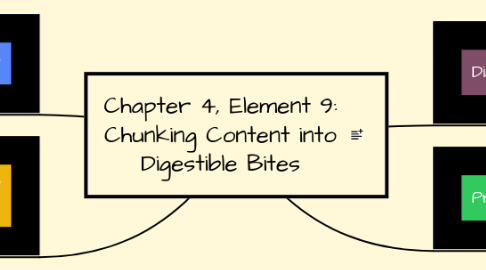
1. An Effective Memory Strategy
1.1. How to Chunk
1.1.1. While teaching students how to chunk, it is important that we teach them the three main parts, i.e. identifying the chunks, grouping and memorizing the chunks, and retrieval of chunks.
1.2. Identifying the Chunks
1.2.1. The students here have to identify similarities or patterns in the information based on which they can group it. For example, they can categorize information based on events, dates, influencing factors, etc.
1.3. Grouping & Memorizing the Chunks
1.3.1. Once the similarities have been identified, students can group or organize the information into chunks and memorize them.
2. Using Preassessment Data to Vary the Size of Each Chunk
2.1. Adjust instruction based on students' scores on a preassessment...
2.1.1. Vary the size of each chunk of content
2.1.1.1. If most students have high scores, then the class could handle larger chunks of info
2.1.1.2. If the class does not perform well on the preassessment, material should be presenting in smaller chunks
2.1.2. Polling Technology to preassess
2.1.2.1. Efficiently preassess the knowledge of students - electronic assessments will minimize scoring time
2.1.2.1.1. Use the scores to determine the extent chunking would need to be to make the information manageable for students
3. Digital Presentation Tools
3.1. interactive graphic organizers highlighting small chunks of info
3.1.1. Prezi
3.1.2. Google Drive
3.2. -IWB tools/software
3.2.1. Built-in tools from SmartNotebook or Mimio
3.3. digital presentations
3.3.1. Glogster
3.3.2. Mindmeister
3.4. reading and annotating text with apps
3.4.1. Evernote Skitch
